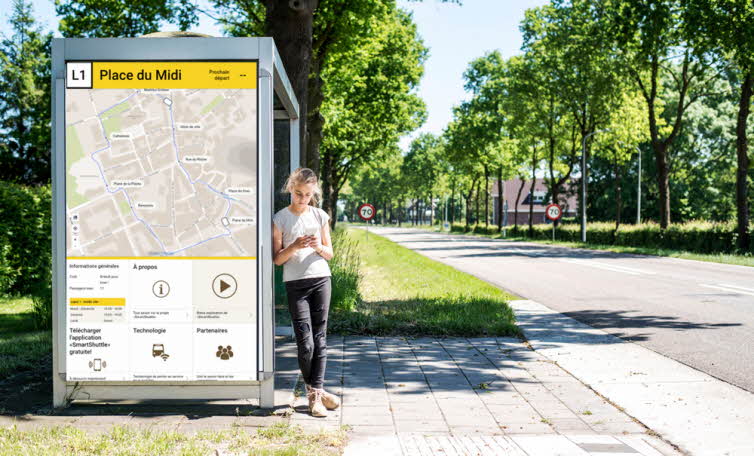Q. Please imagine, You're Steven Spielberg now, and you're making a sequel to Minority Report. what future shape will you create?
A. More than 50 percent of the world’s population live in major metropolitan areas, and more people are coming. By 2050, that number is expected to near 70 percent. Cities will be more crowded but thanks to new mobility services, they won’t feel that way to residents. I imagine shared electric autonomous vehicles offering convenient mobility services that move more people with fewer vehicles, with cleaner air and many facilities like parking structures and some roadways repurposed as open space, affordable housing, or other urban needs.
Q. There are various opinions on the timing of commercialization of autonomous driving at levels 4 and 5. This point seems to be a big difference depending on what type of car or service people are talking about. For example, workers in the traditional automotive industry around me still see this as a bit further away. How does Bestmile view that with a wide range of vehicles type and services in mind?
A. The first deployments of Level 4-5 autonomous services are not that far away. But they will happen in well-selected geofenced areas with low traffic and at low speeds in some cities. What is more difficult to predict is the pace of adoption. How long will it take for the public to become comfortable with these services? What will be critical is the quality, reliability, accuracy and safety of the services. If they are more convenient than driving, for example, adoption is likely to be strong.
Q. I thought Bestmile is a software company, so software engineers were the key and starting point. But founders, including you, are civil engineers. How does this work to date at Bestmile?
A. Urban mobility presents civil engineering challenges, not just software challenges! Our civil engineering backgrounds provide us with an understanding of how cities work (and don’t work), and what our customers need. Fleet orchestration software is the tool that we are applying to make urban mobility work better. We have built a strong team of software engineers, data scientists, and product developers that are excited about creating a product that can have a positive impact on the quality of life in cities.
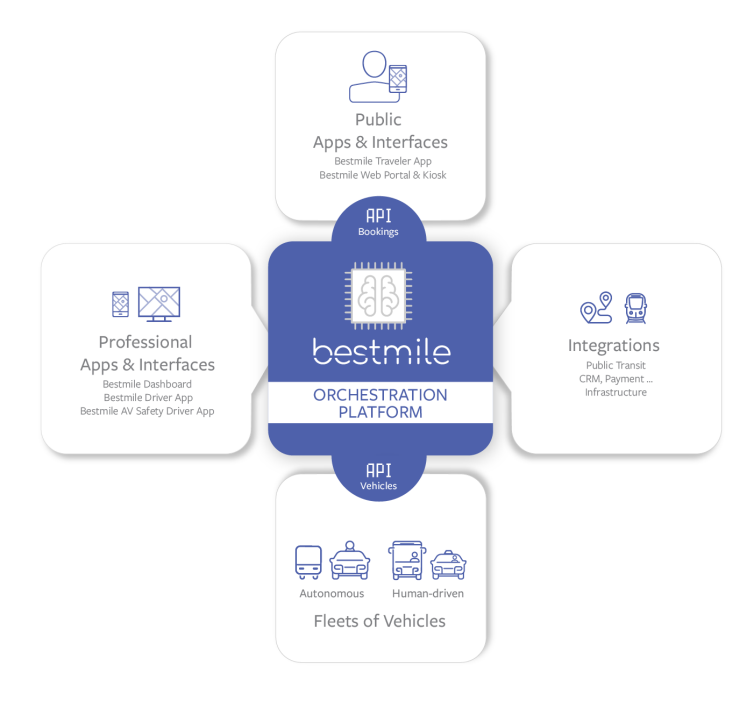
Q. I know founders' experience of autonomous driving has been around for quite some time. Until recently, could you please tell us milestones of Bestmile?
A. We founded Bestmile after we were asked to oversee one of the first demonstrations of autonomous vehicles in Europe (CityMobil2) in 2012. While the vehicles were able to navigate a pre-defined route and avoid obstacles, they were not able to communicate or work together as a fleet. For example, at one point the route was reduced to one lane, and when the vehicles met “face-to-face,” they were unable to move around each other. They just stopped. So, we had to find a way to enable them to make fleet-level decisions, not just individual vehicle-level decisions. Soon the platform was requested by other autonomous shuttle projects throughout Europe. We have expanded the platform to support human-driven ridehailing and micro-transit, as well as autonomous “robotaxi” fleets. We have customers on three continents using the platform for multiple types of human-driven and autonomous vehicles, with on-demand and schedule-based services.
Q. Does Bestmile target the time when traditional cars and transportation systems mix with future modes such as autonomous driving MaaS? Can you explain briefly about Bestmile's platform?
A. Bestmile’s Fleet Orchestration Platform is vehicle and technology agnostic, meaning we can support vehicles of any brand or type—autonomous or human-driven. Mobility services need to be orchestrated regardless of who or what is doing the driving. By orchestrated, we mean that vehicle and driver utilization and passenger convenience both need to be optimized for performance. Operators need to get as much revenue as possible from vehicles, and passengers convenience requirements need to be met. Balancing these objectives at scale—optimizing each ride as hundreds of thousands of requests are received and sending the right vehicle to the right place at the right time—is extremely challenging. We enable service providers to offer predictability for both metrics. Supporting both human-driven and autonomous vehicles is important because the two modes of transport are likely to co-exist for many years.
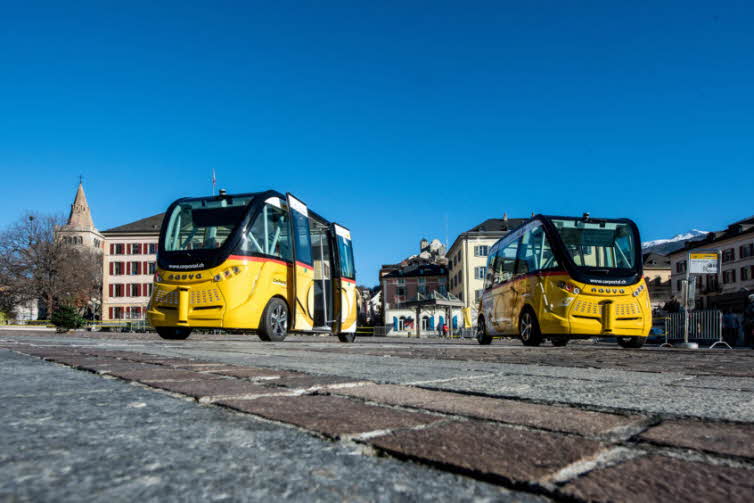 Q. IT, MaaS such as Uber, and car makers often develop their own solutions. Existing players in the fleet market, such as taxis and trucks, are also competitors. Recently, many startups have come up with similar solutions, such as Ford's RideOS and Hyundai's Code42 investment. What makes Bestmile differentiating, competitive and globalizable? Are there any traditional car OEM customers?
Q. IT, MaaS such as Uber, and car makers often develop their own solutions. Existing players in the fleet market, such as taxis and trucks, are also competitors. Recently, many startups have come up with similar solutions, such as Ford's RideOS and Hyundai's Code42 investment. What makes Bestmile differentiating, competitive and globalizable? Are there any traditional car OEM customers?
A. There are big differences between self-driving technology, MaaS platforms, and a fleet orchestration solution like Bestmile’s. Self-driving technology has
been mainly focused on navigation and safety. MaaS platforms are service aggregators that allow travelers to view and book rides using multiple modes of transport—they don’t direct vehicles at all.
Fleet orchestration is about transforming vehicles into fleets capable of delivering valuable services. Bestmile can connect with any vehicle or driver app and direct vehicles where to go to meet incoming demand as well as future demand based on real-time and historical demand data. We can also receive ride requests from any source, including a MaaS platform, and we can send instructions to any vehicle self-driving tech stack. Our platform is unique in that it enables multiple service typologies—station-to-station and door-to-door; fixed and flexible routing; open access, instant booking and pre-booking; pooled and single rides; on-demand and schedule-based services. This gives mobility providers a great deal of flexibility in meeting the needs of their markets.
Q. I think that functions such as path finding and dispatch that reflect and predict real-time traffic are key to fleet management. Am I right to think so? What else is very important? Are you confident that Bestmile is leading in this area?
A. Awareness of traffic is certainly important for dispatching and routing, but matching supply and demand is the most challenging part of any mobility service. The goal is to have every vehicle in the fleet carrying paying passengers as much of the time as possible. Empty vehicles lose money. So, understanding demand volume and locations, and sending vehicles on missions requires reactive and predictive decision making. Deciding which vehicle to send on a mission involves not just that single mission but also knowing where it will go after the mission is completed to minimize “deadheading,” or the distance traveled while empty. Our fleet orchestration performs both reactive and predictive decision making to be able to tell every vehicle where to go, when to go, and how to get there.
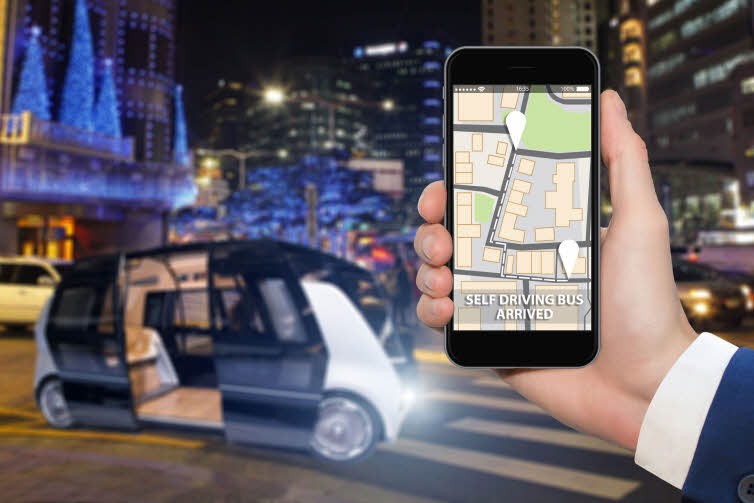 Q. How does Bestmile's operating optimization methodology differ between services and vehicles, such as traditional ride hailing such as Uber Ride and Robo Taxi, Car Rental, geofenced autonomous shuttle, human driven and autonomous micro transit on public roads?
Q. How does Bestmile's operating optimization methodology differ between services and vehicles, such as traditional ride hailing such as Uber Ride and Robo Taxi, Car Rental, geofenced autonomous shuttle, human driven and autonomous micro transit on public roads?
A. Peer-to-peer ridehailing (Uber, Lyft) is inefficient by design. Because the operators don’t own the vehicles, empty kilometers don’t cost them anything. They only pay a driver when a customer is traveling, and they don’t pay for any vehicle costs. So, they are more incentivized to flood cities with vehicles to make sure the service is always available nearby. Once you have a fleet of owned vehicles, with or without human drivers, you want those vehicles to be occupied as much as possible. The optimization factors differ more due to the type of service to be delivered than due to who or what is doing the driving. A scheduled, station-based service, for example, needs to be planned on data like public transit schedules for connections, while an on-demand service needs to take into account city-wide demand. Shared, or pooled on-demand rides are even more complex as the excess ride times for travelers need to be predictable for travelers and operators. Bestmile offers the only platform of its kind that is capable of optimizing any type of vehicle for any type of service.
Q. Is Bestmile's platform deeply related to the safety of autonomous driving? How?
A. Bestmile’s platform sends instructions to vehicles—dispatching, ride-matching, and routing. It does not drive the vehicle, so vehicle safety is more the responsibility of the vehicle manufacturer and/or the self-driving technology that is used. We enable operators to monitor fleets from a single dashboard and can provide data from vehicles (speed, number of passengers, fuel level, maintenance alerts, video feeds from inside and outside the vehicle) that give them status information for some safety issues.
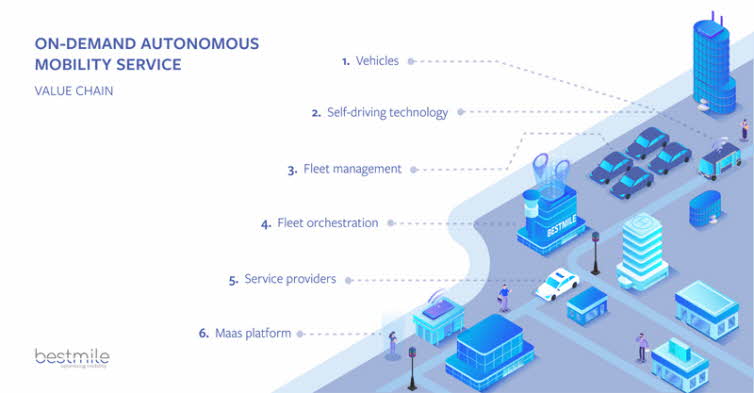 Q. When targeting multimodality, management and routing, extensive collaboration and partnerships are important. How many companies, institutions, and governments are you working with? And how do these improve the accuracy and efficiency of Bestmile's solution?
Q. When targeting multimodality, management and routing, extensive collaboration and partnerships are important. How many companies, institutions, and governments are you working with? And how do these improve the accuracy and efficiency of Bestmile's solution?
A. Bestmile partners with third-party data providers (traffic, weather) and integrates with operator back-ends to enable mobility services to synchronize with other modes of transport. This is especially important for “last mile” services that move people to and from transport hubs like train stations and bus stations. Because service convenience is so important to utilization, we have multiple integrations available to synchronize multimodal journeys and to adapt to real-time conditions. For example, our platform can connect with train schedules and see that a train is late and instruct vehicles and drivers to wait longer at the station; or we can see that a train has more passengers than normal and can send extra vehicles.
Q. By country, by company, by their strategy, there is a difference in their passion for global collaboration. and Bestmile is Swiss company. Do these factors hinder globalization?
A. Mobility tends to drive globalization as the need for standards becomes apparent. It is no accident that things like traffic signals and roadway signage are very similar from country to country, for example. That said, we are creating a market with few existing, universal standards and regulations, especially for acceptable self-driving technology and vehicle safety. This could hinder globalization if the public and private sectors cannot agree soon enough to enable mass deployment. Because our platform is vehicle and technology agnostic, we are in a good position to help vehicle makers, technology providers, and service providers work together. The Swiss are known for neutrality and precision, two qualities that are very important in the changing world of mobility services.
Q. Have you thought about the Korean market? What opportunities do you see in Korea? What business outcomes are you doing in Asia?
A. We do not currently have any active projects in Korea, though last year we announced a partnership with HMI, makers of Ohmio autonomous shuttles. HMI is from New Zealand and has some relationships with Korean mobility businesses and smart city initiatives. We would welcome to discuss the opportunities to help mobility providers in Korea to introduce new services to relieve traffic and congestion.
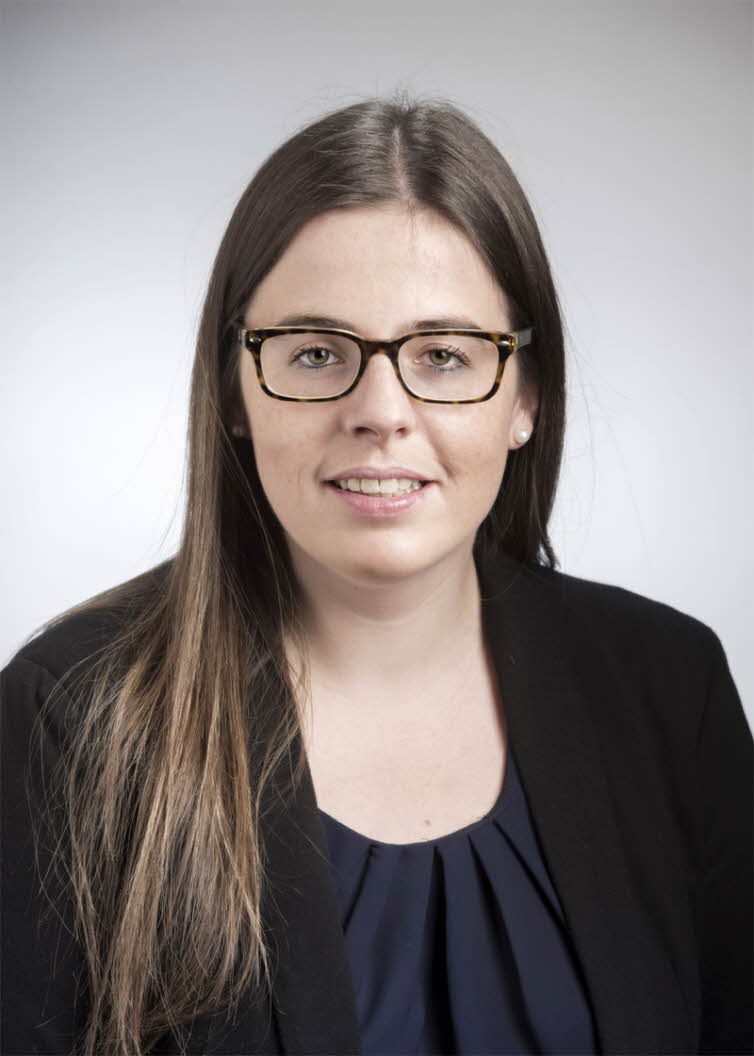

 Q. IT, MaaS such as Uber, and car makers often develop their own solutions. Existing players in the fleet market, such as taxis and trucks, are also competitors. Recently, many startups have come up with similar solutions, such as Ford's RideOS and Hyundai's Code42 investment. What makes Bestmile differentiating, competitive and globalizable? Are there any traditional car OEM customers?
Q. IT, MaaS such as Uber, and car makers often develop their own solutions. Existing players in the fleet market, such as taxis and trucks, are also competitors. Recently, many startups have come up with similar solutions, such as Ford's RideOS and Hyundai's Code42 investment. What makes Bestmile differentiating, competitive and globalizable? Are there any traditional car OEM customers? Q. How does Bestmile's operating optimization methodology differ between services and vehicles, such as traditional ride hailing such as Uber Ride and Robo Taxi, Car Rental, geofenced autonomous shuttle, human driven and autonomous micro transit on public roads?
Q. How does Bestmile's operating optimization methodology differ between services and vehicles, such as traditional ride hailing such as Uber Ride and Robo Taxi, Car Rental, geofenced autonomous shuttle, human driven and autonomous micro transit on public roads?
